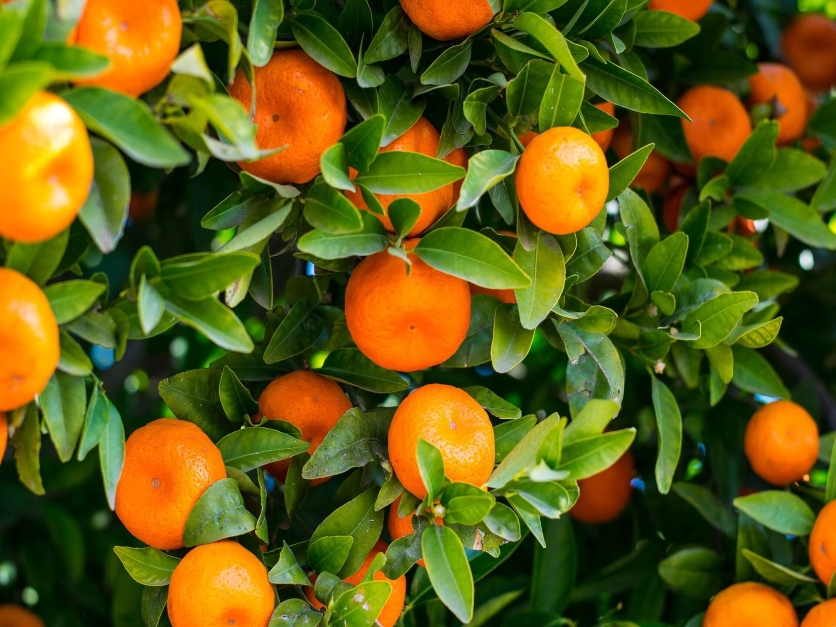Picking California’s citrus crops typically involves a single worker per tree, a naturally socially-distant practice that has lessened the pandemic’s impact on harvests, which occur almost throughout the year.
Greg Kamin of Agua Tibia Ranch in San Diego County says the contractor he works with for temporary employees took on the responsibility of ensuring his crews were in line with California’s COVID safety guidelines. But he adds that because his operation has federal food safety and good agricultural practices certifications, regular hand-washing and other cleaning procedures were already routine.
During the pandemic, he says, they’ve been “cleaning everything more often than we normally do.” The harvests have progressed without infections. He said he’s not aware of any COVID-19 cases among his contract employees and all of his five staff have stayed healthy. Kamin says pandemic or not, he typically has a single worker pick fruit from a specific group of trees. But he’s also been hiring fewer workers at a time, which is a function both of the pandemic and the market conditions (which, of course, also have been impacted by the pandemic).
“We tend to try to space it out a little bit so that we’re not having huge crews in here,” Kamin said. For the Valencia orange harvest, he’ll hire 10-15 people now, instead of 30 historically, and they will pick the fruit over a longer period. It’s similar with avocados, which were hit especially hard in the marketplace when restaurants shut down. Kamin says a year ago, just before the World Health Organization declared the pandemic, he was getting $1.72/pound for 8-ounce avocados. That dropped to 91 cents at the worst point.
“That was a pretty good-size hit as far as income,” he said.
Alan Washburn also saw changes to consumer eating habits impact California fruit. He’s on the board of Villa Park Orchards, a cooperative that operates several citrus packing houses.
Interested in more coverage and insights? Receive a free month of Agri-Pulse West.
“(COVID) made the grapefruit business better,” he said. “People started eating good healthy food at home.”
Washburn says the current navel orange harvest is off to a slow start this year, which he attributes to the strong presence of imported citrus. But he says the packing house has all of the coronavirus safety measures established.
“Everybody’s trained and the in-house people are all wearing masks,” he said. Plastic dividers separate workers inside. “We can’t change the packing system, but we can put dividers in.”
Sonia Rios, a subtropical horticulture farm adviser with the University of California Cooperative Extension, says the packing house presents more of a COVID-19 risk than picking the fruit.
“They get cleaned and sorted and that’s where it kind of gets a little big complicated because you’re in an enclosed area,” she said. Washburn’s modifications reflect what she’s seen in other operations as well. “They have had to rejigger things, for sure.”
But she says citrus, avocado and date harvests have gone smoothly throughout the pandemic.
“I haven’t heard of any outbreaks,” she said, “I haven’t heard of any issues.”
Another pandemic impact, Washburn says, was a further tightening of the labor market.
“We still have a big sign up out in front looking for help,” he said. When pandemic-related unemployment benefits were at their peak, he says some would-be workers were not interested. That has since eased some, but labor remains an ongoing issue.
“Labor was a little tougher to get this year,” Kamin said, adding that it wasn’t just because of the pandemic. The hiring challenge “has been increasing over the years.”
For more news, go to www.Agri-Pulse.com.

